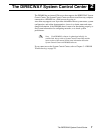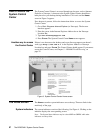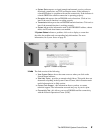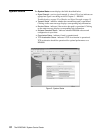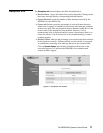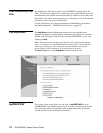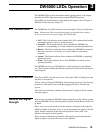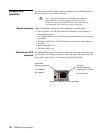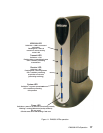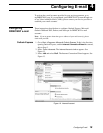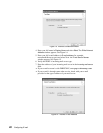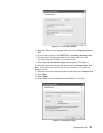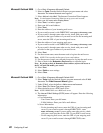
DW6000 LEDs Operation 15
DW6000 LEDs Operation 3
The DW6000 LEDs provide information about operating status. This chapter
describes the LEDs’ appearance during normal DW6000 operation.
If the LEDs are not functioning as described in this chapter, refer to Chapter 5 –
DW6000 Troubleshooting, on page 25.
The DW6000 LEDs The DW6000 has five LED indicators on the front panel. They are listed below.
Note: Whenever the LEDs do not function properly as described below, check to
be sure you have the correct power supply, PN 1031105-0001.
• LAN - The LAN indicator shows whether the LAN is connected and usable,
and whether there is receive or transmit activity.
• Transmit - The Transmit indicator shows whether the DW6000 can
transmit or is transmitting, or if some condition is preventing transmission.
• Receive - The Receive indicator shows whether the DW6000 has acquired
the correct outroute, is receiving, or if some condition is preventing
reception.
• System - The System indicator shows whether the DW6000 is completely
operational or not.
• Power - The Power indicator shows if the DW6000 is powered on and
operating normally.
The DW6000 also has two LED indicators on the back panel, at the Ethernet
port. These indicate whether the Ethernet connection is functional and if the port
is passing data.
Fatal Error Indication If the Power LED is off and one or more of the other LEDs is flashing, the unit
may have to be replaced.
First try power cycling the DW6000 by disconnecting the power from the surge
protector or other power source and then plugging it back in. The unit may
recover.
If the fatal error indication continues, the unit must be replaced. Please contact
customer support.
Weather and Signal
Strength
Rain or snow can make the DW6000 signal strength drop to 30 or below. At that
level the DW6000 will stop receiving satellite signals, and the Receive LED will
go blank.
Heavy rain or snow can interfere with the antenna’s reception of the signal. In
addition, buildup of moisture, snow, or ice on the antenna can interfere with the
signal. Similar conditions at the Network Operations Center (NOC) can
interfere with signals for brief periods.
Severe weather conditions may interfere with signal reception intermittently.
Signal strength is restored as the rain or snow subsides.



